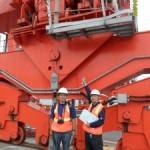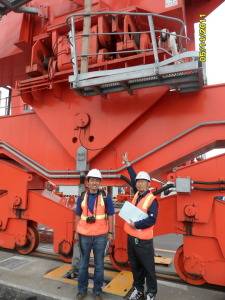Written by Yoshi Oritatsu: As a member of the American Society of Civil Engineers (ASCE) Post Disaster Assessment Team, I recently visited Japan to investigate the damage to waterfront structures from the 2011 Tohoku earthquake and tsunami. I was fortunate to join the Coasts, Oceans, Ports, and Rivers Institute (COPRI) team, comprised of six U.S. engineers with expertise in port facility design. While in Japan, four Japanese researchers from the Port and Airport Research Institute (PARI) joined the team. Their assistance was integral to our success and greatly appreciated by all.
We spent seven days visiting various ports along approximately 400 km of Japan’s northeastern coast, from Soma Port (Fukushima Prefecture) to Hachinohe Port (Aomori Prefecture). We investigated the performance of three major oil terminal facilities, two container terminals, two bulk loading and unloading facilities, and numerous fishing ports.
Most roads were clear at the time of our visit, two months after the earthquake and tsunami, but piles of debris remained throughout the coastal cities and villages. While building damage was extensive, wharf structures generally performed well. We observed significant vertical settlement and scour at many backland site areas, with only minor movements of the wharf structures. Also, some of the older sheet piling with tie-rod construction had small sections that failed due to tie-rod fracture. In general, though, the larger problem was the operational issues caused by about 0.6 m of tectonic subsidence along the coast.
Similar to wharf structures, container cranes and bulk unloaders generally performed well during both the earthquake and tsunami. Exceptions were due to vessel impacts and localized foundation failures. For example, at Soma Port two bulk unloaders collapsed from the impact of a berthed vessel during the tsunami. Also, at Hitachi Port, which we did not visit, an online source reports crane collapses.
The Sendai Container Terminal was equipped with two conventional container cranes and two cranes with seismic isolation systems. The crane structures were undamaged but had water damage to the electrical systems low on the crane. The isolation systems on both seismically-isolated cranes had activated and are believed to have performed as intended.
I will be working closely with the other reconnaissance team members over the next several months summarizing our findings and recommendations in an effort to learn from this disastrous event.

